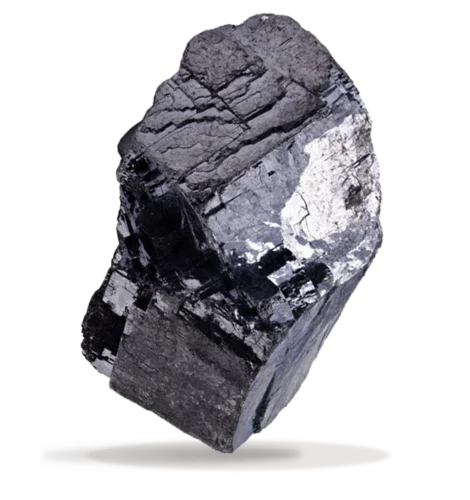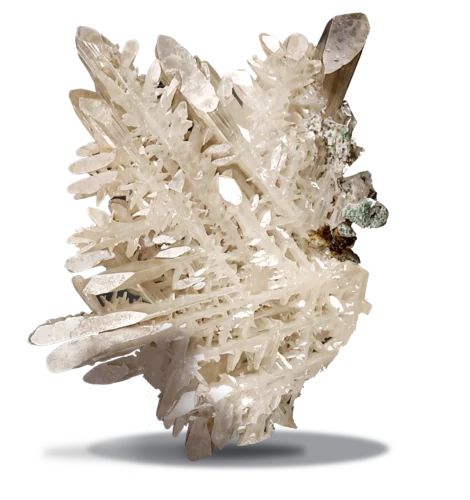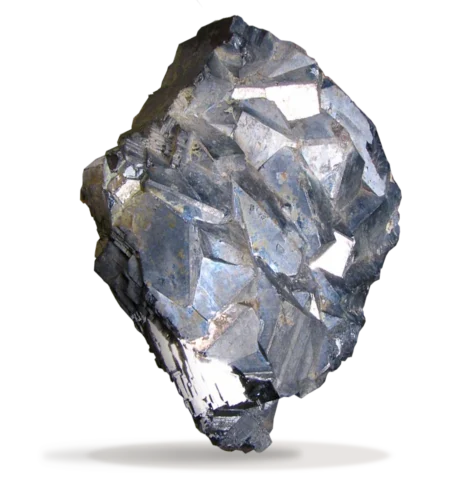

“Main Lead Ore Minerals”
Lead ore minerals, primarily galena (PbS), along with cerussite (PbCO3) and anglesite (PbSO4), represent the cornerstone of lead production worldwide. Galena, a sulfide mineral, is distinguished by its high lead content, metallic luster, and cubic crystalline structure. It often occurs in association with other valuable metals such as silver, making it a dual-source mineral for both lead and precious metals. With a specific gravity ranging from 7.2 to 7.6 and a Mohs hardness of 2.5, galena is both dense and soft, characteristics that facilitate its beneficiation during mining and processing. Its high refractive index and electrical conductivity further enhance its utility in industrial applications.


Geologically, lead ore minerals are typically found in hydrothermal veins, sedimentary exhalative (SEDEX) deposits, and Mississippi Valley-type (MVT) deposits. These deposits are formed through the precipitation of lead-bearing fluids under specific temperature and pressure conditions, often in carbonate rocks or shale. Lead often coexists with zinc, copper, and silver minerals, enriching its economic appeal by allowing for multi-metal extraction strategies. This coexistence enables mining operations to offset costs through the sale of additional metals, improving the overall economic feasibility of the deposit. Moreover, the presence of silver significantly enhances the value of lead ores, making them a lucrative target for polymetallic mining ventures. While hydrothermal deposits are associated with volcanic activity, SEDEX and MVT deposits result from sedimentary processes, reflecting the mineral’s diverse genesis

Geologically, lead ore minerals are typically found in hydrothermal veins, sedimentary exhalative (SEDEX) deposits, and Mississippi Valley-type (MVT) deposits. These deposits are formed through the precipitation of lead-bearing fluids under specific temperature and pressure conditions, often in carbonate rocks or shale. Lead often coexists with zinc, copper, and silver minerals, enriching its economic appeal by allowing for multi-metal extraction strategies. This coexistence enables mining operations to offset costs through the sale of additional metals, improving the overall economic feasibility of the deposit. Moreover, the presence of silver significantly enhances the value of lead ores, making them a lucrative target for polymetallic mining ventures. While hydrothermal deposits are associated with volcanic activity, SEDEX and MVT deposits result from sedimentary processes, reflecting the mineral’s diverse genesis



“Main Applications”
Industries targeting lead concentrate seek specific qualities, such as high lead purity, minimal impurities, and the presence of silver as a by-product. Lead’s chemical properties, including its corrosion resistance, malleability, and excellent shielding against radiation, make it indispensable in various industrial applications. These include batteries, cable sheathing, radiation protection, and alloys, where its unique characteristics provide critical functionality. Silver, often extracted as a secondary product, enhances the economic value of galena ores, catering to the demand for electronics, jewelry, and industrial catalysts. The mining and beneficiation processes aim to maximize these desirable traits, ensuring that the extracted concentrate meets stringent industry standards.


